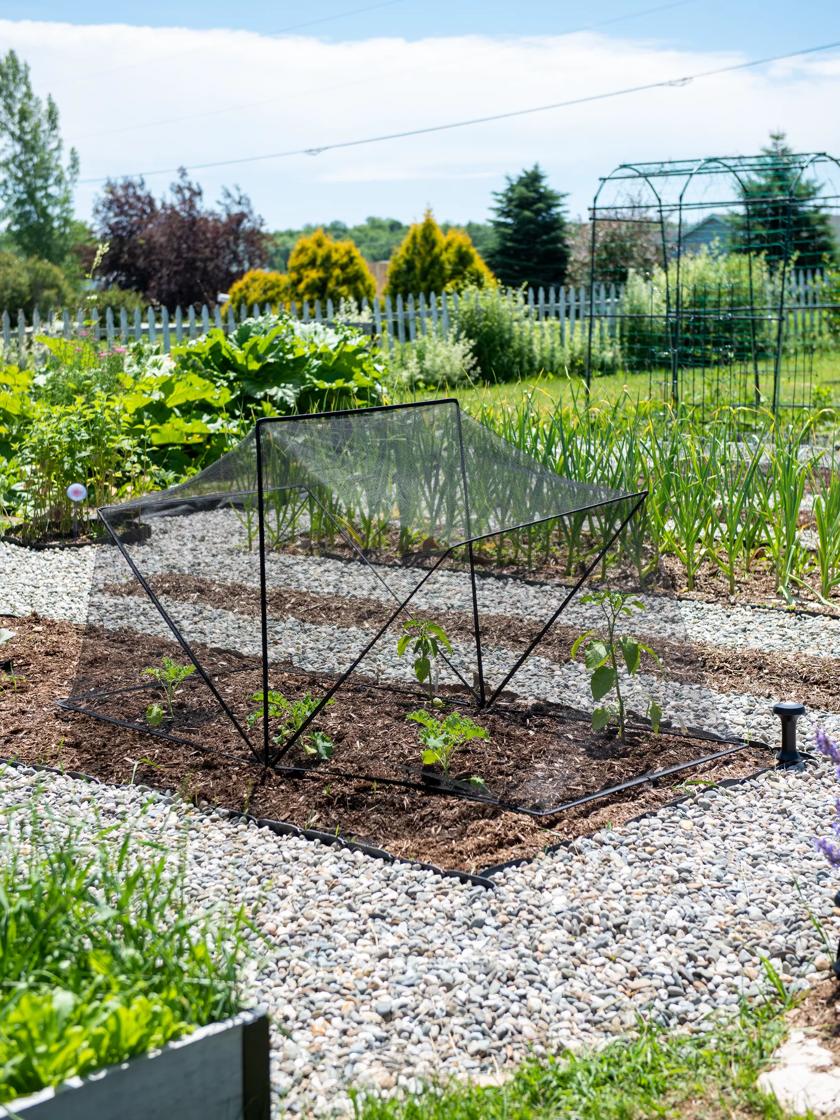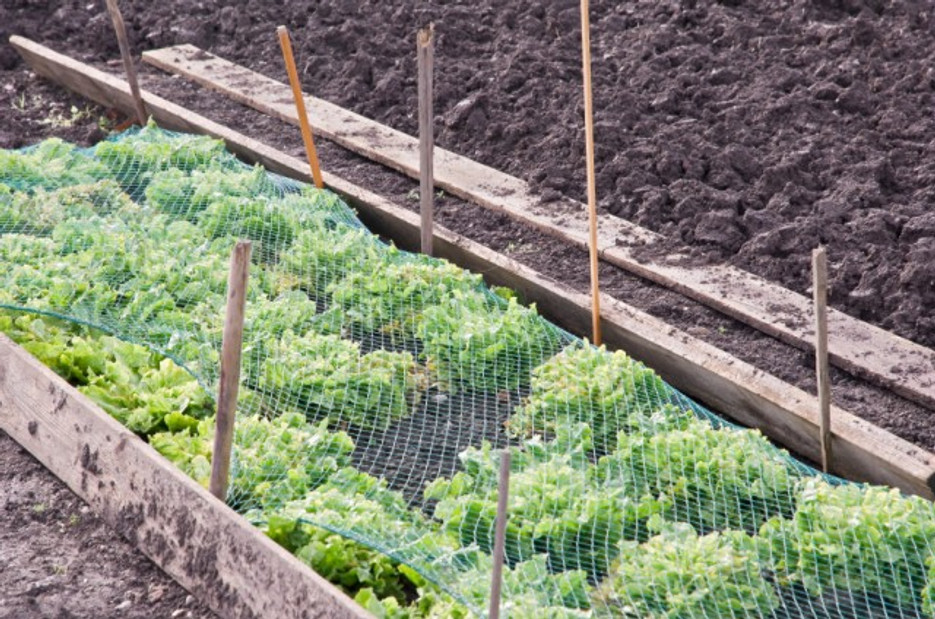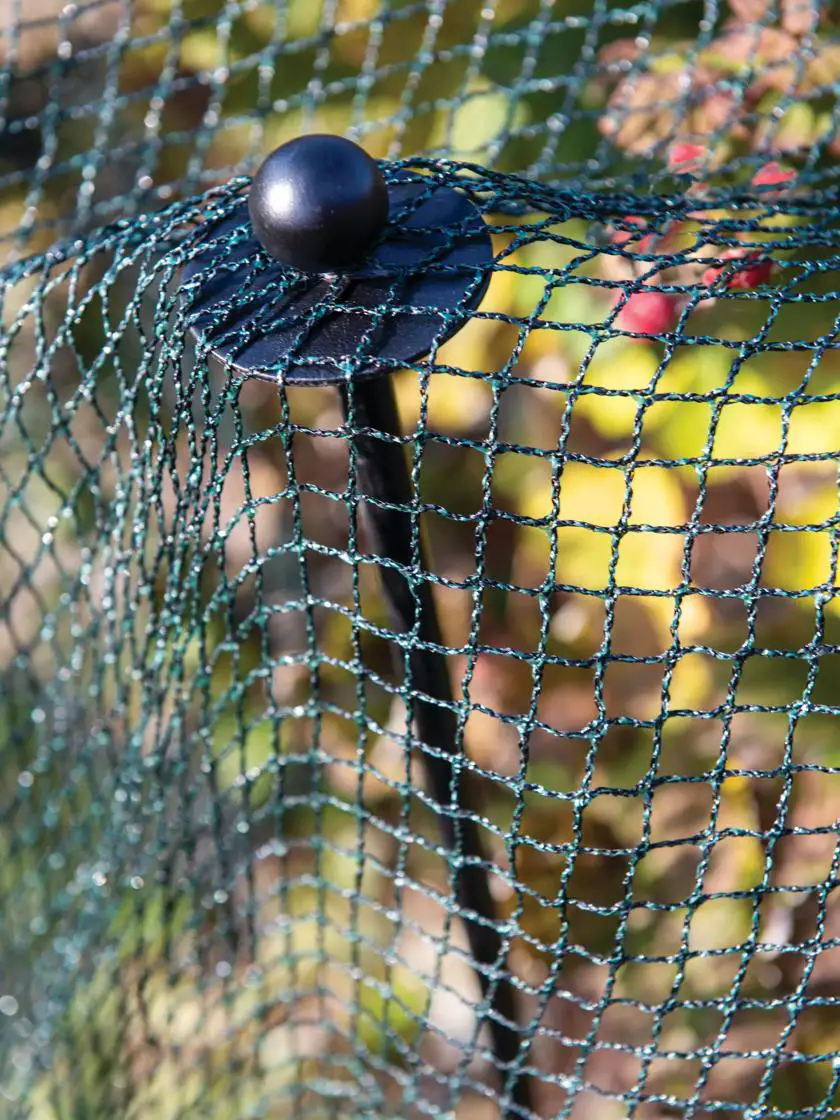Imagine stepping into your garden, only to find your carefully nurtured plants ravaged by birds. Frustrating, isn’t it?
You pour your heart into growing your garden, yet these feathery intruders seem to have their own plans. But what if there was a simple solution to protect your plants and ensure your hard work pays off? Enter bird netting for gardens—your garden’s best friend.
Bird netting acts as a shield, safeguarding your precious plants without harming the birds. It’s an effective way to deter those pesky visitors and preserve the beauty and bounty of your garden. But how does it work, and what should you consider when choosing the right netting for your garden? Dive into this article, and you’ll discover everything you need to know about using bird netting effectively. Save your crops, enjoy peace of mind, and turn your garden into a flourishing paradise. Ready to uncover the secrets of garden protection? Let’s get started!

Credit: www.amazon.com
JUMP TO TOPIC [hide]
Benefits Of Bird Netting
Bird netting offers several benefits for garden enthusiasts and farmers. It’s a simple yet effective solution for protecting plants from birds. This protective measure helps maintain the health and yield of crops. By using bird netting, you can ensure your garden thrives without unwanted interference.
Prevents Crop Damage
Birds can cause significant harm to fruits and vegetables. Pecks and scratches lead to ruined produce. Netting acts as a barrier, keeping birds away from crops. It allows plants to grow undisturbed.
Reduces Pest Control Costs
Managing pests often requires expensive treatments. Bird netting reduces these costs. Birds are major garden pests. Keeping them out saves money on pest control. Less expenditure leads to better budget management.
Enhances Plant Growth
Plants grow healthier without bird interference. Birds can stunt growth by damaging leaves and stems. Netting ensures plants receive sunlight and water uninterrupted. This promotes stronger, more vibrant plant growth.
Types Of Bird Netting
Garden bird netting comes in various types, including polyethylene, polypropylene, and nylon. Each offers durable protection against birds, safeguarding plants and crops. Ideal for different garden sizes, these nets effectively prevent bird damage without harming the environment.
When you’re looking to protect your garden from pesky birds, choosing the right type of bird netting is crucial. Each type offers unique advantages, and understanding these can help you make an informed decision. Whether you’re dealing with small finches or larger birds, the right netting can save your fruits and veggies from becoming a bird’s breakfast. ###Knotted Netting
Knotted netting is known for its durability and strength. It’s made by tying individual threads together, creating a robust barrier against birds. This type of netting is ideal for larger gardens or areas with high bird activity. I’ve personally used knotted netting in my backyard, and it withstood not only birds but also strong winds. If you’re in an area with unpredictable weather, this might be your best bet. ###Extruded Netting
Extruded netting is a lightweight option that offers easy installation and removal. It’s created by extruding plastic into a net form, making it cost-effective and efficient. This netting is perfect if you have a small garden or want something that can be quickly deployed. Last summer, I had a small patch of strawberries that needed protection, and extruded netting did the job without breaking the bank. ###Woven Netting
Woven netting offers a flexible and soft solution for bird-proofing your garden. It’s made by weaving threads together, allowing for a snug fit around your plants. This type of netting is gentle on delicate plants and can be used for a variety of garden setups. When I had a delicate herb garden, I found woven netting to be perfect because it didn’t damage the plants, yet kept them safe from birds. Choosing the right bird netting involves considering the specific needs of your garden. Are you looking for something temporary or permanent? Do you need something strong or lightweight? Answering these questions can guide you to the perfect netting solution. Remember, your garden’s success partly depends on keeping those birds at bay!Choosing The Right Netting
Bird netting protects gardens by keeping birds away from plants. It ensures fruits and vegetables remain undisturbed. Choose durable materials for lasting protection.
Choosing the right bird netting for your garden can be the difference between a flourishing sanctuary and a patch of desolate earth. Imagine walking into your garden and finding your prized fruits and vegetables untouched by feathered intruders. But how do you choose the best netting? It’s not just about throwing a net over your plants; it’s about selecting the right material, mesh size, and ensuring it withstands weather changes. Let’s dive into the specifics to help you make informed decisions.Material Considerations
The material of your bird netting will dictate its durability and effectiveness. Opt for polyethylene or polypropylene nets. These are lightweight yet strong, providing excellent protection without suffocating your plants. Consider UV-treated nets. They offer extra resilience against sun damage, extending their lifespan.Mesh Size Selection
Mesh size is crucial in keeping birds out. If you’ve ever seen a sparrow slip through a large mesh, you’ll know size matters. Smaller mesh sizes, like ¾ inch, are ideal for small birds. They prevent even the tiniest of intruders from sneaking in. Larger mesh sizes, around 1 inch, work well for bigger birds. This choice balances protection with airflow.Weather Resistance
Weather can be unpredictable, so your netting must hold up through seasons. Select nets that are resistant to rain and moisture. This prevents mold and rot, ensuring longevity. Wind-resistant nets are another consideration. They withstand strong gusts without tearing or causing harm to your plants. Choosing the right netting isn’t just a task; it’s a strategic move to safeguard your garden. Have you thought about how bird netting can transform your gardening experience? With careful selection, you can enjoy lush harvests while minimizing damage.Installation Tips
Protecting garden plants is easy with bird netting. Place stakes around the area to support the netting. Ensure the netting is taut to prevent sagging and secure it tightly to keep birds out.
Installing bird netting in your garden can save your fruits and veggies from hungry birds. It’s not just about draping netting over your plants; there’s a method to it. The right installation can make all the difference. Let’s dive into some practical tips to get you started.Garden Layout Planning
First, take a walk around your garden. Notice where birds are most active. Is it near fruit-bearing plants or your vegetable patch? Knowing this helps you decide where to focus your netting efforts. Think about your garden’s layout. Are there tall plants or structures? Use these as natural supports for the netting. Planning ahead can save you time and trouble.Support Structures
Support structures are essential for effective netting installation. You can use poles, stakes, or even the fence around your garden. Consider using PVC pipes or wooden stakes for larger areas. These are sturdy and can hold the netting well. Arrange these supports evenly. This ensures the netting covers the garden without sagging. A taut net is effective in keeping birds out.Securing The Netting
Once your supports are in place, it’s time to secure the netting. Start by draping the net over the supports. Ensure it covers all the areas you planned. Use garden clips, ties, or even zip ties to secure the netting to the supports. Make sure it’s tight enough to deter birds but not too tight to damage plants. Check the edges. Birds can be sneaky and find their way in through gaps. Secure the perimeter with rocks or garden staples for added assurance. Have you ever thought about how a small change in securing methods could save your entire crop? Testing different securing methods might just be the key to your garden’s success.Maintenance And Care
Bird netting protects gardens from pesky birds, ensuring plants thrive. Regular checks for damage and debris are essential. Proper installation and tension maintain effectiveness, safeguarding your garden’s beauty.
Maintaining and caring for your bird netting is crucial to ensure it effectively protects your garden. Just like any other garden tool or accessory, regular attention can prevent bigger issues down the line. Think of bird netting as your garden’s shield; keeping it in top shape will ensure your plants thrive without pesky intruders. But how do you keep it well-maintained? Let’s dive into the essential steps you need to take.Regular Inspections
Regular inspections are your first line of defense in maintaining bird netting. Make it a habit to check the netting every couple of weeks. Look for any signs of wear and tear. Are there any holes or frayed edges? These can become gateways for birds. Early detection can save you time and effort later.Cleaning Techniques
Cleaning your bird netting doesn’t have to be a chore. Use a garden hose to spray off dirt and debris. This keeps the netting clear and visible. For stubborn spots, a mild soap solution can work wonders. Rinse thoroughly to avoid soap residue, which can attract pests.Repairing Damaged Areas
Repairing damaged areas promptly is vital. Small holes can be patched using twine or zip ties. Keep some spare netting pieces handy for larger repairs. If you notice extensive damage, consider replacing the section entirely. It might sound drastic, but this ensures your garden stays protected. Maintaining bird netting doesn’t have to be difficult or time-consuming. Have you ever found yourself frustrated by persistent garden pests? Maybe all it took was a small tear in the netting. Regular care can prevent these headaches and keep your garden flourishing. So, what’s stopping you from giving your bird netting the attention it deserves? Embrace these practical steps and make the most of your garden’s protective shield.
Credit: www.gardeners.com
Environmental Impact
Bird netting can protect gardens. It also impacts the environment. Understanding its effects is crucial. We must ensure safety and sustainability.
Wildlife Safety
Wildlife safety is a major concern. Nets can trap small animals. Birds might get caught in poorly designed nets. Choose nets with proper mesh sizes. This reduces accidental trapping. It keeps wildlife safe.
Installing nets carefully also helps. Ensure edges are secure. This prevents animals from getting entangled. Protect your garden without harming wildlife.
Sustainable Materials
Sustainable materials make a difference. Choose eco-friendly netting options. Biodegradable materials break down naturally. This reduces environmental impact. They are a greener choice for gardens.
Some nets use recycled materials. These are better for the planet. They reduce waste and conserve resources. Opt for sustainable options whenever possible.
Recycling And Disposal
Disposal of netting matters. Old nets should not end up in landfills. Consider recycling options. Many nets are recyclable. Check with local facilities.
Proper disposal protects the environment. It reduces pollution and waste. Be responsible with old or damaged nets. Help keep our planet clean.
Common Mistakes To Avoid
Bird netting is a popular solution for protecting gardens. It keeps unwanted birds away from precious plants. Yet, many gardeners make common mistakes. These errors can reduce the netting’s effectiveness. Understanding these pitfalls can save time and effort.
Improper Installation
Proper installation is key to netting success. A loose net can let birds sneak through. Ensure the netting is tight and secure. Use strong supports to hold the netting in place. Check for gaps regularly. Birds find ways through even the smallest openings.
Choosing Incorrect Materials
Material choice affects netting performance. Some nets are weak and tear easily. Opt for durable materials, like polyethylene. This type is strong and long-lasting. Consider the size of the mesh. Smaller holes provide better protection. Avoid nets with large gaps.
Neglecting Maintenance
Maintenance ensures the netting stays effective. Over time, nets can sag or tear. Regular checks help spot issues early. Repair any damage immediately. Clean the netting to remove debris. This keeps it in good condition. Proper care extends its lifespan.

Credit: www.birdbgone.com
Frequently Asked Questions
What Are The Disadvantages Of Bird Netting?
Bird netting can be costly to install and maintain. It may harm birds if not correctly fitted. Cleaning debris caught in nets can be challenging. Netting may alter the aesthetic of buildings. Incorrect installation can lead to gaps, reducing effectiveness.
Regular inspections are needed to ensure functionality.
How Do You Put Bird Netting Over A Garden?
Secure bird netting by draping it evenly over your garden. Use stakes or poles for support. Ensure edges are pinned tightly to the ground. Trim excess netting to prevent sagging. Regularly check for gaps to keep birds out.
What To Use Instead Of Bird Netting?
Consider using reflective tape, scare balloons, or ultrasonic bird repellents. Install spikes or use bird gel. Try decoy predators like owls or hawks for natural deterrence. Opt for mesh netting as a flexible alternative. These methods effectively prevent birds without using traditional netting.
Will Bird Netting Keep Squirrels Out Of The Garden?
Bird netting can deter squirrels but may not fully prevent them. Squirrels can chew through netting. Use strong, metal netting for better results.
Conclusion
Bird netting protects gardens from unwanted visitors. It keeps fruits and plants safe. This simple solution helps gardeners maintain a healthy environment. Netting is effective and easy to install. It’s a practical choice for garden lovers. By using bird netting, gardens thrive without harm.
It allows plants to grow undisturbed. This method is both affordable and sustainable. Gardeners can enjoy bountiful harvests with less worry. Bird netting supports a peaceful coexistence with nature. A simple step for a fruitful garden. Try bird netting and see the benefits unfold.
Your garden deserves this care and protection.

